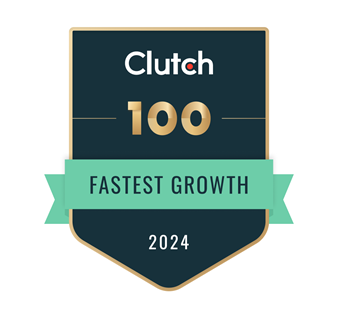What is Software as a service or SaaS?
You may not recognize or appreciate it, but Software as a Service or SaaS is all around you. These days it manages everything from your internet shopping cart to your movie streaming for consumers and businesses alike.
Cloud computing has three main categories: Software as a Service (SaaS), Infrastructure as a Service (IaaS), and Platform as a Service (PaaS).
SaaS is the most popular and most commonly used cloud computing model, and you don't even have to be an IT expert to use it!
In a nutshell, SaaS is a method of delivering software or applications over the Internet—as a service. It is sometimes called the Cloud.
The best way to understand SaaS is by considering how you use Google Docs. We use it as a service rather than download the programs. This service is free with Google Docs.
Most SaaS products provide you with a kind of site leasing service. It's just a matter of using their services without worrying about security or development.
Software as a Service (SaaS) Model Defined
Customers can access online applications provided by third-party providers through cloud infrastructure. This means that software can be accessed from any device with a web browser and an internet connection, rather than just from the machine where it is installed. The National Institute of Standards and Technology (NIST) defines three different deployment models for SaaS.
-
Private Cloud:
A cloud-based application is provided on infrastructure that is completely owned by a single organisation, but is used by multiple companies at the same time. The infrastructure of an organisation may be owned, managed, and operated by the organisation itself or by a third party. This can either be done on-site or off-site.
-
Public Cloud:
In the cloud, software is built on publicly accessible infrastructure.
The infrastructure may be owned, managed and operated by a business, academic or government organisation, or some combination. It exists on the premises of the cloud provider.
-
Hybrid Cloud
A cloud-based application typically runs on one type of infrastructure, but can switch to another if necessary. The use of standardised technologies or proprietary technologies allows data and applications to be portable.
Examples of Software as a Service
A prime example of SaaS is email and messaging apps. The cloud can be a game-changer for ingrained business software like Microsoft Outlook. The use of messaging apps such as Slack and Microsoft Teams is starting to overtake email as the most popular method of communication worldwide.
SaaS solutions improve the capability of storing, organising, and maintaining data.
Customer relationship management (CRM) and marketing automation tools are examples of how SaaS applications help businesses achieve their goals. Regardless of the SaaS solution, today's SaaS customers range from individuals attracted to the affordability (or free) aspects of online applications to enterprise companies that integrate SaaS into their lines of business. You can opt for a wide variety of software as a service options such as Office 365, Google G Suite (Apps), Dropbox, Salesforce, SAP Concur and Zoom, among others.
-
Office 365. The latest features and security updates are available monthly with Office 365's integrated apps and services. This includes Word, Excel, PowerPoint, and more.
-
Google G Suite (Apps). Companies and organisations can solve productivity problems with Google G Suite. There are email management tools, word processing tools, spreadsheets, presentations, calendars, and cloud storage features included in the suite.
-
Dropbox. It is possible to drag and drop files from your desktop to your Dropbox browser. This runs on Windows, Mac, Linux operating systems, and mobile devices.
-
Salesforce. CRM solutions like Salesforce connect companies and customers. All departments have a single, shared view of every customer with this integrated CRM platform.
-
SAP Concur. With SAP Concur, customers can book corporate travel and track expenses. Which results in a better user experience, more accurate data, and richer reporting. An intuitive interface makes it easy to complete expense reports on the web and on mobile devices.
-
Zoom. Using Zoom, you can host video conferences in the cloud, schedule online meetings, and send group messages throughout the world.
Advantages of SaaS Technology
SaaS is the holy grail of the recurring revenue model for software developers and offers faster deployment times than on-premises applications. Small businesses can take advantage of SaaS pricing models to disrupt existing markets.
The following are other advantages:
-
Accessibility: Any device can run the application with an internet browser 24/7.
-
Operational Management: Traditional licensing management, installation, and equipment updates are not required.
-
Cost Effective: A pay-as-you-go model is available with no upfront hardware costs.
-
Scalability: It is easy to scale a solution to meet evolving needs.
-
Data Storage: Cloud computing is routinely used to store data.
-
Analytics: Tools for data-driven reporting and intelligence.
-
Increase Security: Software as a Service providers invest heavily in security technology.
-
Implementation speed: SaaS simplifies budgeting, makes it easy to use. Configure the implementation time for projects is shortened because there are no large upfront costs.
-
The cost of setup and infrastructure is low: No capital expenditures need to be depreciated over time on your balance sheet; you just pay for what you need.
-
Accessible from anywhere You can work from anywhere you have an internet connection. Whether you are on a desktop, laptop, tablet, mobile, or other networked device.
-
Scalability When your business grows, you can adapt the system's requirements based on the number of users, the volume of data, and the functionality you need.
-
A leading service level agreement (SLA) for performance and uptime. In-house teams find it difficult to guarantee the availability of software when needed.
The additional benefits are:
-
Easy to learn model
-
Rich functionality
-
All-in-one model
Challenges of SaaS
As a consequence of running on an internet connection, SaaS has the biggest advantage, but also the biggest shortcomings. It's great if your connection is strong and reliable. It's pathetic if you don't have a reliable connection. The availability of broadband and high-speed networks, like 5G, is increasingly making this less of a problem. Still you should consider these scenarios.
Loss of Control: Everything is managed by the vendor, so you are at the vendor's mercy.
Limited Customization: SaaS applications offer limited customization options from vendors.
Slower Speed: Client and server apps typically have less latency than SaaS solutions.
Security Risks: SaaS providers secure their applications themselves, but sensitive data should be protected with strict measures.
Some other ideas about SaaS
The good thing about SaaS is that we still can manage the system. We can add the updates - this is not just physical hardware any more. As compared to physical software, it is much easier to manage and we can deploy things much faster than as if we had been installing physical software on your drive.
With SaaS users get a development framework, which they can test, build, deploy, manage and control practically every step of the development lifecycle. On top of that, system users do not have to worry about the hardware. They do not have to worry about managing updates or other issues that might come up.
With Saas you get:
-
Hosted applications
-
Developer tools
-
Operating systems
-
Servers storage
-
Network firewalls
-
Data centre
SaaS allows consumers to connect to and use cloud-based apps over the internet. Consumers are not responsible for managing the datacenter, server, or any of the development for running the applications.
With SaaS users using the Software as a Service are focused only on using the software.
Email is an important SaaS application. For example, Gmail. The entire application is hosted by Google and clients are focused merely on using their application rather than providing any kind of development. Customers do not maintain infrastructure.
Another example is Office 365. Users control their information not only by email. Microsoft provides its users with Storage space, like with Microsoft Onedrive. Salesforce, Cisco Webex and Slack also run on SaaS.
Some features of SaaS:
-
Subscription based
-
Access to sophisticated applications
-
Access to it anywhere
The SaaS model is a game changer when compared to the other traditional software models. Traditionally consumers would have to manage, install, and upgrade software themselves on local servers or computers. With SaaS you can simply provision a server for an instance in the cloud and in a couple of seconds, you’ll have your software or applications ready for use.
Today SaaS is in everything you use from Gmail, Microsoft Office 365, Adobe Creative Cloud. Spotify, and even Netflix. SaaS is also used in a wide variety of business operations today. From communication, collaboration, customer relationship management, billing, sales management, human resources management, financial management, enterprise resourcing planning. Saas is at the very top of the IT stack and has the highest level of abstraction.
-
Efficiency. The first is cost efficiency. The SaaS provider is responsible for all of the upfront costs in maintaining and managing the application. You only pay for the services that you use. However Subscription models are also common.
-
Scalability. Two, scalability. The host is responsible for providing for all of the databases. You are free to use as much or as little of the servers as you need. Provided that you pay for the service.
-
Availability. Third, is availability. Since your applications live in the Cloud, you can access them from anywhere at any time provided that you have a good connection.
Still there is a catch. In Europe the laws of GDPR require you to maintain a copy of your data where you reside.
Last but not least, you always have the latest version, right. So there is no need to update your licensing or update manually the new version of your software.
In the past you’d download software and you might be operating with something that’s not compatible with a different version of that software. With SaaS everyone’s on the same version of that software and you don’t have to manually update anything.
Instead of installing and maintaining software, you simply access it via the Internet, freeing yourself from complex software and hardware management.
SaaS applications are sometimes called Web-based software, on-demand software, or hosted software. Whatever the name, SaaS applications run on a SaaS provider’s servers. The provider manages access to the application, including security, availability, and performance.
SaaS Case Studies
Case study #1. ProRank
ProRank is a world-leading construction and building services company that builds in excess of $6 billion worth of contracts annually. Globally and across all market sectors. Since 1965, the client has developed into a multi-faceted company capable of delivering all aspects of a project.
Project goals
Here at Bits Orchestra merged human resources and subcontractors for this project and moved the service to the Cloud. All while maintaining the highest quality of resources.
Our solutions
We created a marketplace for builders and subcontractors using ASP.NET Zero frameworks. After posting the project, the developer invites subcontractors and rates their work. It allows subcontractors to gain more work by building out their reputation on the platform. Both building companies and subcontractors will benefit from the platform's ease of use and excellent user experience.
Case study #2. ASP Guard (web)
Founded over 20 years ago, A.S.P. Incorporated provides security, concierge, and customer service. This organization's main goal is to provide quick-responding service to the security industry, which has never been seen before. The A.S.P. Security Services policy is to respond to any service request within three hours.
Project goals
A web application we developed for Bits Orchestra manages school crossing guard scheduling in Toronto. With the help of an app, crosswalk guards are assigned to crosswalks, and their attendance is detected. Administrative staff at head office can monitor Guard locations and timing in real-time using a dashboard. The main goal of our project was to create a web application that simplifies the management of services. Assigning guards to locations, creating jobs (locations to be serviced), creating employee accounts, and managing clients.
Key challenge
Reworking the existing website, improving UX, and making it easier to understand was the main objective of this project. Implement automated reports instead of Excel spreadsheets, which were previously prepared manually, and expand the website with new functionalities. Performance improvement is another challenge. The performance of this website is noticeably affected by the amount of information this website collects and processes.
Our solutions
We decided to automate all processes as much as possible in order to meet the client's needs. The site allows users to choose the guard that is most suitable for servicing a particular location. Following are the factors that will be considered when the system searches for available employees. Holidays, booked leaves, assigned shifts, distance between guard's home and working area are all factors to be considered.
We also have added the following features:
-
Location tracking of guards - a map showing their trajectory. It shows if the guard left the geofence or not. Location tracking of guards allows to trace the areas where the most time is spent.
-
Tracking the location of guards - allows you to trace the areas where they spend the most time.
Case study #3. Lavelio
Client
Lavelio is an artificial intelligence company specializing in social media analysis.
Project goals
This company provides a self-serve online platform to the fashion, beauty, and jewellery industries.
Key challenge
In order to enable Lavelio to engage with more clients, Bits Orchestra developed a multi-tenant (SaaS) solution (to some degree).
Our solutions
The backend was built with .NET Core boilerplate in order to cut off low-level functionality like authentication, email sending, and user management. A Reach-based UI template was also provided by the Lavelio team to minimise user interface development efforts.
In addition, Bits Orchestra developed a multi-tenant solution with a database split by tenant, role-based admin, which allows Lavelio team members to create tenants, admin users, connect SM data, etc. An admin can also manage access to a customer's portal from one place. We also developed a simple and intuitive portal with dashboards and reports for the SM feed analysis for the end users.
Result
Easy-to-use SaaS platform to take consumer social media marketing to the next level.
Author
Roman Hutnyk


_1.jpg?width=270&height=270&ext=.jpg&maxsidesize=338&resizemode=force)



-(1).jpeg?lang=en-US&width=270&height=270&ext=.jpeg&maxsidesize=338&resizemode=force)




